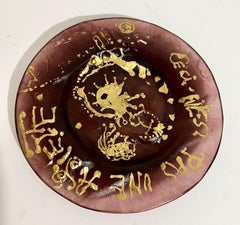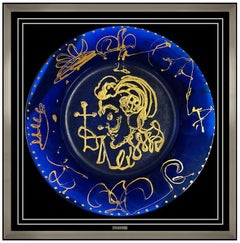Dali Daum
1970s Pop Art Abstract Sculptures
Glass
1970s Abstract Abstract Sculptures
Glass
Late 20th Century Surrealist Abstract Sculptures
Glass
Recent Sales
1970s Surrealist Abstract Sculptures
Glass
1970s Surrealist Figurative Sculptures
Blown Glass
1970s Surrealist Mixed Media
Plate Glass
1960s Surrealist Figurative Sculptures
Glass
1960s Surrealist Figurative Sculptures
Glass
1970s Surrealist Abstract Sculptures
Plate Glass
1970s Surrealist Abstract Sculptures
Glass
1960s Surrealist Figurative Sculptures
Glass
1960s Surrealist Figurative Sculptures
Glass
1960s Surrealist Figurative Sculptures
Glass
1960s Surrealist Figurative Sculptures
Glass
2010s Contemporary Abstract Sculptures
Glass
1980s Surrealist Figurative Sculptures
Glass
People Also Browsed
Early 2000s Street Art More Art
Screen, Plastic
Mid-20th Century Sculptures
Bronze
1960s Modern Portrait Prints
Linocut
1990s English Decorative Boxes
Gold
1930s Modern Abstract Prints
Etching
1960s Pop Art Abstract Prints
Lithograph
Antique 19th Century English Chinese Chippendale Vitrines
Glass, Mahogany
1980s Pop Art Portrait Prints
Board, Screen
Vintage 1970s Spanish Modern Sofas
Foam
Late 20th Century Abstract Abstract Paintings
Paper, Ink, Gouache
1970s Surrealist Figurative Prints
Etching
1940s Modern Figurative Drawings and Watercolors
Paper, Ink
1920s Figurative Paintings
Oil
1910s Impressionist Figurative Paintings
Canvas, Oil
1980s Surrealist Figurative Sculptures
Bronze
Mid-19th Century Nude Drawings and Watercolors
Paper, Wax Crayon, Pencil
Finding the Right Sculptures for You
The history of sculpture as we know it is believed to have origins in Ancient Greece, while small sculptural carvings are among the most common examples of prehistoric art. In short, sculpture as a fine art has been with us forever. A powerful three-dimensional means of creative expression, sculpture has long been most frequently associated with religion — consider the limestone Great Sphinx in Giza, Egypt — while the tradition of collecting sculpture, which has also been traced back to Greece as well as to China, far precedes the emergence of museums.
Technique and materials in sculpture have changed over time. Stone sculpture, which essentially began as images carved into cave walls, is as old as human civilization itself. The majority of surviving sculpted works from ancient cultures are stone. Traditionally, this material and pottery as well as metal — bronze in particular — were among the most common materials associated with this field of visual art. Artists have long sought new ways and materials in order to make sculptures and express their ideas. Material, after all, is the vehicle through which artists express themselves, or at least work out the problems knocking around in their heads. It also allows them to push the boundaries of form, subverting our expectations and upending convention. As an influential sculptor as much as he was a revolutionary painter and printmaker, Pablo Picasso worked with everything from wire to wood to bicycle seats.
If you are a lover of art and antiques or are thinking of bringing a work of sculpture into your home for the first time, there are several details to keep in mind. As with all other works of art, think about what you like. What speaks to you? Visit local galleries and museums. Take in works of public art and art fairs when you can and find out what kind of sculpture you like. When you’ve come to a decision about a specific work, try to find out all you can about the piece, and if you’re not buying from a sculptor directly, work with an art expert to confirm the work’s authenticity.
And when you bring your sculpture home, remember: No matter how big or small your new addition is, it will make a statement in your space. Large- and even medium-sized sculptures can be heavy, so hire some professional art handlers as necessary and find a good place in your home for your piece. Whether you’re installing a towering new figurative sculpture — a colorful character by KAWS or hyperreal work by Carole A. Feuerman, perhaps — or an abstract work by Won Lee, you’ll want the sculpture to be safe from being knocked over. (You’ll find that most sculptures should be displayed at eye level, while some large busts look best from below.)
On 1stDibs, find a broad range of exceptional sculptures for sale. Browse works by your favorite creator, style, period or other attribute.




